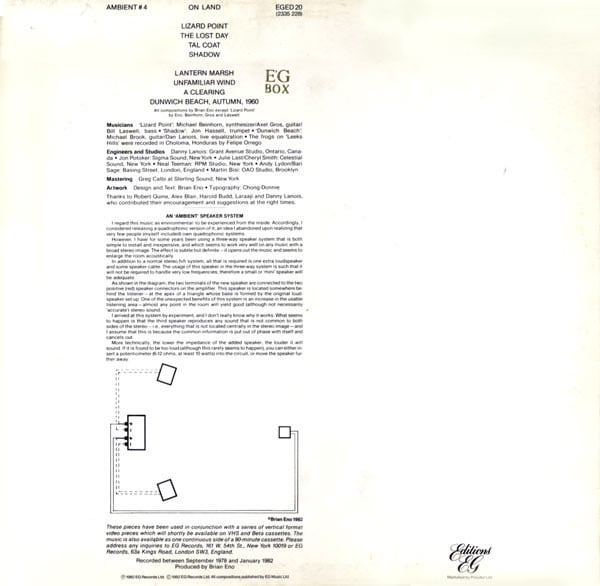Hopefully not too off-topic, but to clarify about 4 channel reel decks. Most simply recorded and played. These were clearly for the quad market, as their existence coincided with the quad era.
However, the TEAC 3340 (and maybe others I don't know of) were specifically made for multitracking at home for musicians, or put another way, though they were capable of quad playback, I've seen little if any sign of a 3340 marketed specifically to quad playback, and many examples of marketing to musicians.
The difference is "simul-sync" switches on the 3340, one could playback from the record head while recording a new track. This kept tracks in sync. Decks marketed toward quad did not, in general, have sync switches to do this.
Here is a Discogs link to a TEAC record from 1974 indicating that this model was marketed to musicians, and not that it was some "happy accident" that musicians started buying quad decks (most quad decks were unusable for true multitracking).
https://www.discogs.com/release/1680558-Dick-Rosmini-Hello-People-Home-Made-With-Teac
The TCA-40 was the original 4-channel TEAC reel machine. It did not have simul-sync. Then the home studio makers requested a deck with simul-sync, the TCA-43 was first. The TCA-40 was marketed for quad. Both were available by 1972.
(I corrected model numbers)
Like I said, TEAC caught on to the real reason 4-channel reel recorders sold well early in the game.
One problem with making the matrix mix also the stereo mix would rear up its head when broadcasting said record. That record might sound fine if your radio were a stereo model. Things get dicey, though, if you listen on a mono radio. If a particular sound is mixed to center rear, it might be heard with a stereo radio, but will cancel out on a mono radio. It will simply disappear. It's more pronounced with SQ, but can affect any quad matrix system.
My quad mixes are made with the disappearing back in mono in mind.
I think that the BBC wasted time, effort and money in designing their Matrix H system. Their choice of phase angles is very bizarre. I surmise that they were chosen so that the mixed to mono signal levels were exactly identical?
Actually, H was designed to keep the center back from disappearing in mono.
They were working with so-called "great circle" matrix systems. A great circle system has all of the encoded loci of a sound circling the listener in a circle on the Poincare sphere.
In this diagram of the Poincare sphere:
Olive is the locus of phonograph lateral recording (center in stereo)
Violet is vertical recording (center back in QS and SQ)
Cyan is the left channel in stereo (far side of sphere as shown).
Red is the right channel in stereo (near side of sphere).
Black is the clockwise rotation of SQ left back.
Brown is the anticlockwise rotation of SQ right back.
- QS (Matrix A) has olive F, red R, violet B and cyan L
- SQ has olive F, red RF, brown RB, violet B, black LB, and cyan LF (not great circle).
- BMX (Matrix F) has black F, red R, Brown B, and cyan L.
- Matrix H has tan F, red R, sea B, and cyan L.
- UHJ has green F and purple B. (R and L are close to red and cyan - not great circle).
They wanted a matrix where back sounds do not disappear in mono play.
- QS (Matrix A) and SQ (Matrix B) have back sounds that disappear in mono play.
- They started with BMX (Matrix F), which plays all directions at the same level in mono.
- BMX produces a very phasey stereo image without a decoder.
- Next they tried Matrix H. No sounds disappear in mono, and stereo is much less phasey.
- The sound of Matrix H is still too phasey for good stereo.
- The next level (after the trials) is UHJ. It is much less phasey and back does not disappear.







